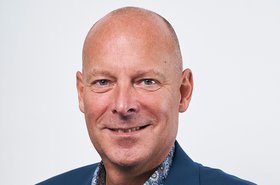With three data centers in Stockholm and a fourth on the way, it’s safe to say colocation provider Conapto has plenty of renewable resources at its disposal, as Stefan Nilsson attested to in a conversation with DCD’s Alex Dickins.
“Most Americans are probably quite bored with us in the Nordics talking about sustainability,” Nilsson joked. “But the fact is, that's where the green energy is. We're one of the best energy producers in the world from that perspective. So from the beginning, the energy we use is green.”
The climate also works in Conapto’s favor, making it easier to build energy-efficient data centers, with the ability to utilize a natural abundance of wind power, hydro-power, and free cooling. And although PUE might not be the sustainability KPI of the future, from that standpoint, the company can operate at very low numbers.
Since 2019, Conapto has been fully powered by sustainable energy, implementing innovative heat reuse technology, which contributes to district heating across Stockholm.
“Stockholm is probably one of the world's best-built district heating networks, with over 4,000 kilometers of piping. Around 90 percent of the homes and businesses in Stockholm utilize district heating,” said Nilsson.
But, aside from having won the geographical lottery, how does Conapto ensure it’s making the most of what the Nordics have to offer?
“We have an excellent collaboration with our utility companies,” said Nilsson. “They are very keen on planning for future capacity, as well as helping us with the heat reuse and the 24/7 matching that we use today.”
What is 24/7 matching?
On an hourly basis, Conapto’s ‘24/7 matching’ ensures that for however much electricity is consumed in that hour, the same amount is produced via renewable means, in this case from a combination of wind and hydropower.
“These things are available in the Nordics, and we use them every day. I think, for that reason, there is a lot for other regions to learn. The German Data Centre Association was actually on a visiting trip two weeks ago in Sweden, so they were at our facility learning more about heat reuse,” said Nilsson.
Sharing knowledge in this way, says Nilsson, is key to inspiring others to do good, and perhaps try and emulate some of the sustainable practices the Nordics already do so well.
And as sustainability regulations continue to tighten, Nilsson is a staunch proponent of the call for increased transparency across the industry, where operators will be forced to know what they’re consuming, how they’re consuming it, and when.
“GHG reporting will be very, very important if you’re going to do business in Europe,” said Nilsson. “But I think it's a good thing, because that's what we lacked in the industry, we lacked transparency.”
The grass is greener (in the Nordics)
While the rest of the world grapples with capacity and power availability issues, the Nordics can’t relate.
“In the Nordics, we have a lot of available capacity, even if there are constraints in some areas. But I would say, overall, we’re in a very good position. And things like grid instability, for example, we don't really know what that is, because in the Nordics, we don’t have that problem.”
Preparing for the future
If the EU is to meet its goal of achieving climate neutrality by 2050, Nilsson is of the opinion that more capacity needs to be built in greener locations.
“As operators continue on their sustainability journey, I’d advise them to be very cautious when it comes to site selection. Look at where you can host your applications and, if possible, try to move them to greener places. There is green capacity out there, it's just about utilizing it.”
To hear the full conversation, check out the DCD>Talk here.
More from Conapto
-

Sponsored Stockholm, a great place to be!
The gravitational pull of Stockholm as a sustainable data center hub
-

Sponsored Is data center heat reuse a priority for site selection?
Why ventilate all that usable and precious heat out into thin air? Data center heat doesn't need to go to waste
-

Sponsored Sale leaseback: A great way to a greener data center industry
Sale leaseback could help speed up the dismantling of expensive and environmentally damaging data centers, saving owners and operators a fortune in the process. But how does it work?

